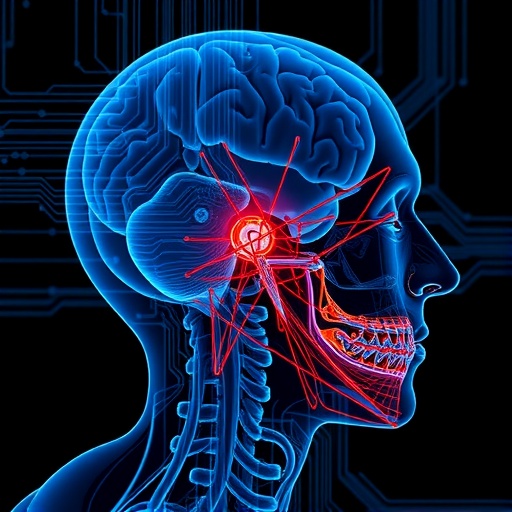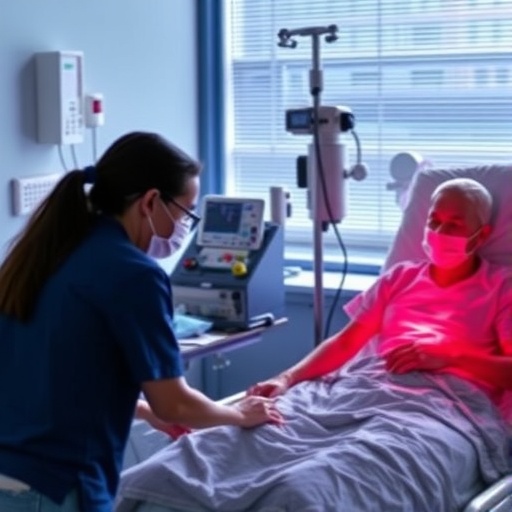In a groundbreaking stride towards revolutionizing neurological diagnostics, recent research has unveiled the remarkable potential of deep learning algorithms to decode subtle facial expression changes associated with a spectrum of neurological disorders. This advancement stems from a comprehensive systematic review and meta-analysis conducted by Yoonesi and colleagues, which rigorously evaluates the efficacy of convolutional neural networks (CNNs) and other deep learning models in identifying neurological conditions through facial analysis. The study consolidates findings from numerous studies between 2019 and 2024, painting a compelling picture of artificial intelligence’s growing role in medical diagnostics.
Neurological disorders represent a vast and complex array of conditions that challenge clinicians due to their often elusive early symptoms and overlapping clinical presentations. Disorders like Alzheimer’s disease, which accounts for the majority of dementia cases worldwide, and rarer genetic conditions such as Angelman syndrome, manifest in changes to patients’ facial expressions — alterations that are subtle yet highly informative. Traditional diagnostic methods frequently rely on invasive, costly imaging techniques or subjective clinical assessments, underscoring the urgency for innovative diagnostic tools.
The reviewed meta-analysis systematically aggregated data from 28 peer-reviewed studies, adhering to the stringent PRISMA2020 guidelines for systematic reviews. Data sources included major scientific repositories such as PubMed, Scopus, and Web of Science. Rigorous quality assessments using the Joanna Briggs Institute checklist ensured that only high-quality studies contributed to the meta-analytic synthesis, providing a robust foundation for the conclusions drawn.
The studies encompassed a diverse range of neurological conditions including dementia, Bell’s palsy, amyotrophic lateral sclerosis (ALS), and Parkinson’s disease, evaluating the performance of various deep learning models tasked with interpreting facial expression data. Convolutional neural networks emerged as particularly effective due to their capacity to automatically extract hierarchical features from complex image data, enabling subtle facial muscle movements and expression patterns to be deciphered with remarkable accuracy.
Quantitative meta-analysis results were promising, revealing an overall pooled accuracy of 89.25%, with a narrow confidence interval (95% CI: 88.75–89.73%), demonstrating high reliability across diverse study designs and populations. Notably, detection accuracy peaked in conditions with more overt facial expression changes: dementia demonstrated a near-perfect detection rate of 99%, while Bell’s palsy followed closely at 93.7%. In contrast, motor neuron diseases such as ALS and cerebrovascular stroke posed greater challenges to the algorithms, with accuracy rates dropping to approximately 73.2%, likely due to the complex and variable motor impairments these disorders induce.
These findings highlight the nuanced capacity of CNNs to differentiate between neurological conditions based solely on facial expression patterns, a non-invasive and cost-effective diagnostic avenue. This could revolutionize early diagnosis and longitudinal monitoring, especially in settings with limited access to advanced neuroimaging facilities. By capturing changes in facial musculature and expression dynamics, these models offer a glimpse into the neurological status of patients through a fundamentally novel biomarker.
Despite this promising landscape, the researchers underscore pivotal challenges that warrant further investigation. The heterogeneity in datasets—differences in population demographics, imaging modalities, and annotation standards—introduces variability that can undermine model generalizability. Standardizing datasets and developing universally applicable protocols for data collection and model training remain critical steps moving forward.
Another layer of complexity arises from ethical considerations concerning privacy and data security, given the sensitive nature of facial imagery. Rigorous frameworks are essential to ensure anonymization and ethical use of patient data to foster trust and regulatory compliance. The potential of these algorithms to be deployed in real-time clinical environments hinges on addressing these critical concerns.
As artificial intelligence continues to evolve, the integration of deep learning models into standard neurological assessment protocols could become standard practice, transforming how diseases are detected and managed globally. The work of Yoonesi et al. represents a foundational milestone, providing empirical evidence and a roadmap for future research in this rapidly advancing domain.
It is clear that the journey toward fully realizing the potential of facial expression analysis in neurological diagnostics is ongoing. This study not only confirms the promise of current deep learning approaches but also identifies pathways for enhancing robustness, scalability, and clinical applicability. The fusion of medical expertise and cutting-edge AI technology delineates a thrilling frontier in healthcare, poised to improve lives through earlier and more accurate diagnosis.
In conclusion, this meta-analytic review substantiates the pivotal role of deep learning algorithms, especially CNNs, in advancing the detection of neurological disorders through facial expression recognition. While challenges remain, the path forward is illuminated by rigorous scientific inquiry and interdisciplinary collaboration, promising a future where artificial intelligence is an indispensable ally in the fight against neurological disease.
Subject of Research: Detection of neurological disorders through facial expression analysis using deep learning algorithms.
Article Title: Facial expression deep learning algorithms in the detection of neurological disorders: a systematic review and meta-analysis
Article References:
Yoonesi, S., Abedi Azar, R., Arab Bafrani, M. et al. Facial expression deep learning algorithms in the detection of neurological disorders: a systematic review and meta-analysis. BioMed Eng OnLine 24, 64 (2025). https://doi.org/10.1186/s12938-025-01396-3
Image Credits: AI Generated
DOI: https://doi.org/10.1186/s12938-025-01396-3
Tags: advancements in neurological disorder identificationAI in neurological assessmentAlzheimer’s disease detectionAngelman syndrome facial indicatorsconvolutional neural networks in medicinedeep learning facial analysismachine learning in medical researchmeta-analysis of deep learning modelsneurological disorder diagnosticsnon-invasive diagnostic techniquessubtle facial expression changessystematic review of AI in healthcare





